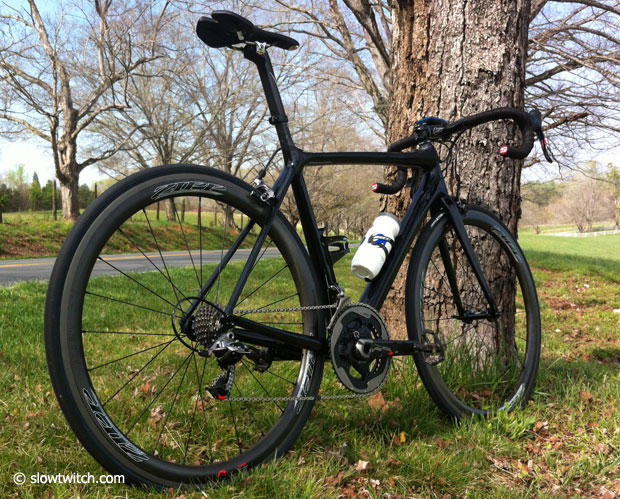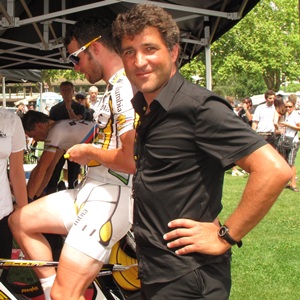Patents’ Effect on Tri Products
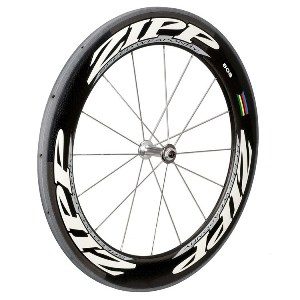
“New and improved”… “lighter, stiffer, faster”… “Now made with more whole grains, organic evaporated cane juice, and a free federal tax return!” How many times have we heard these catch phrases in the marketing lines of, well, most every industry? The question I have – and you should too – is: How much is real, and how much is imagined, created, or just plain wrong?
One of the great things about America is our protection of intellectual property. Staunch readers of Ayn Rand agree that he or she who conjured it, had the wits to create it, and the common sense to patent it, deserve all the fruits of their labor. But what of those who didn’t create the original, and want to sell a competing product? It’s a free market after all, and they must find a way around the patent. What’s more important to the consumer is the fact that these workarounds then must be spun as better than the original… or at least not worse. The typical line tends to be something of an implied: “It’s just as good as the original, only cheaper (we swear)!”
While never-ending monopolies are not desirable, nor is the opposite. Herein, we offer a few examples of Patent Wars at their finest in the triathlon world.
Toroidal Rim Shape Patent
This is likely one of the best-known (and successful) patents in recent cycling history. The patent was co-held by Hed and Zipp, between 1990 and 2010. The language boils down to something like this: non-parallel braking surfaces and a rim with its widest section not at the braking surface. What you end up with is a bulge-shaped rim, which both companies sold to success during the patent’s tenure. Everything else on the market was a then-standard “V-shape” rim, with parallel braking surfaces which were also the widest point on the rim. It’s well known today that a rim having some sort of wide or bulged shape is desirable in the vast majority of possible ambient conditions. It allows the use of different tire widths at less aero penalty, and deals much better with a variety of wind yaw angles (whereas a V rim necessitates the use of a narrow tire and performs best at zero yaw).
So how does a competing company get around this and sell a ‘fast’ wheel? Companies like Rolf, and more recently Easton, relied on very narrow hub flanges in an attempt to reduce frontal area. While this does show a small aerodynamic improvement at low yaw angles (<5 degrees), it does little-to-nothing at higher yaw. Additionally, the clear compromise that this presents is a drastic reduction in a wheel’s lateral stiffness. While not the most important attribute to us as triathletes, it is worth considering – especially for those not as svelte as, say, Michael Raelert. If you’re 200+ pounds, you want a laterally stiff wheel.
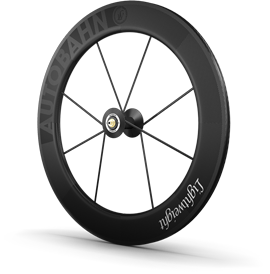
Another option is to take spokes out of the wheel. Lots of spokes. This has been done by many companies, including Rolf, Easton, Mad Fiber, and to the extreme with the 8-spoke 650c front wheel made by Lightweight. Does the removal of spokes make the wheel more aerodynamic? Absolutely; there are fewer spokes churning up the air. However, this also assumes you’re using a spoke that is aerodynamic on its own (10 non-aero spokes may be slower than 20 very-aero spokes). As well, this carries its own compromises in terms of reduced wheel stiffness and mechanical reliability. Breaking a spoke on a training wheel with a box section aluminum rim and 32 spokes results in a slightly out-of-true wheel that can likely be ridden home. If you have an 8 spoke wheel, each spoke must take 4 times the load, which means that they have dramatically higher tension than its 32-spoke cousin. Break one of those spokes and you can still ride home… in your wife’s minivan while she fumes at you.
As far as the rim itself goes, very little has been done to improve aerodynamic performance and while successfully staying outside of the Toroidal patent. Various ledges, lips, or otherwise non-infringing shape manipulations never caught on or proved to be legitimate over the long term. However, now the patent is up, and it’s anyone’s game. We now have some very fast options available from Enve, Reynolds, Bontrager, and others. What this all means to the world of triathlon is: more options, more competition, and a wider array of price points for fast wheels.
Power Meter Patents
Until recently, your only choice for a crank-based power measuring system was SRM. Invented by engineer and entrepreneur Uli Schoberer, this ingenious system revolutionized cycling in the late 1980’s. Specifically, the patent ran from 1986 to 2006. During that time, there were only three other games in town, none of whom were crankset-based.
First was the Saris/Cyclops Powertap hub. This is effectively a similar design to the SRM, only migrated to the rear hub, so it does not infringe on the patent. Strain gauges are used to measure bending of material (in this case, a torque tube fixed to the left side hub flange, and driven by the pawls near the right side hub flange), which is converted to wattage. Powertap competed as the budget power meter, but was good in its own right, and remains so today. The only downside is the inability to switch wheels and retain your power measurement without purchasing a second hub (which brought the total price to equal the SRM). The interplay between SRM and Saris was interesting, and both had compelling attributes. The SRM provides unlimited wheel choice, but you are stuck with one bike (unless you want to go to the trouble of swapping your cranks between bikes). Saris offers an easy, low-cost solution to train with power on more than one bike; just swap wheels. However, the clear compromise is racing – you either need a second wheel, or don’t have the luxury of collecting power data on race day.
The second competitor is the chainstay-mounted magnet system sold by Polar. This system calculates wattage based on chain tension and speed, but unfortunately has been plagued by reliability problems, and never saw the success of either Saris or SRM.
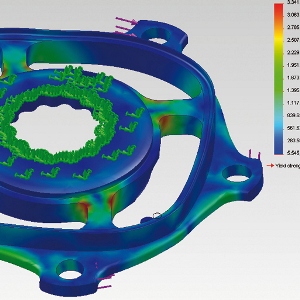
Third was Ergomo; an interesting product that measured power from a bottom bracket. It measures not by strain gauges or chain tension, but by two optical sensors that measure bending of the bottom bracket spindle. While an overall logical design, it has since been outdated by modern outboard bearing crank and bottom bracket designs (Ergomo is only available for 3-piece systems such as square taper, Octalink, and ISIS).
In 2006, the old patent expired, and Quarq emerged. Founded by Jim Meyer, it is effectively the same basic design of the SRM; strain gauges measure bending in the crank spider, which is used to calculate wattage. The other crank-based newcomer is a German outfit called Power2Max. It is a virtual carbon-copy of the others, however with only four strain gauges instead of 8. Both SRM and Quarq use 8 strain gauges in a clever Wheatstone Bridge design. According to SRM:
1. The SRM uses 8 strain gages, 16 grids in a Wheatstone measuring bridge. When force is applied to the crank arms, opposing resistance from the drive train puts stress on the measuring bridge.
2. This stress causes an increase or decrease in the length of the strain gages, thereby changing the electrical resistance of each strain gauge.
What all this does is help reduce power drift as a result of temperature change. All of the strain-gauge-based power meter companies recommend resetting the “zero offset” very often – especially if there has been a large temperature change since your last ride (think of it like zeroing a scale). However, without the Wheatstone Bridge design, Power2Max quotes a wattage drift of 2-4 watts per degree of temperature change (which can easily occur during your ride) – notably more than either Quarq or SRM.
In more recent times, the Garmin Vector and LOOK/Polar power systems have captivated us as potential systems that could trump all others. By hiding a power measuring system inside a set of pedals, it would allow unlimited wheel choice AND bike choice. And if the price is right, it’s better yet. Just a hunch – but I’ll bet they’re patented, too. We don’t know the language of the patent or who holds it (or if perhaps they are two completely different patents held independently). Unfortunately, however, the Vector has been plagued by a common problem in our industry: late delivery. Time after time the launch date gets pushed back – and just recently it was announced that the product is on indefinite hold. The LOOK/Polar system appears to be shipping in small quantities today.
For now, the challenge is on and may the price battle begin; it’s anyone’s game in power. Each company and product have their strengths and weaknesses. This leaves you, the consumer, to decide what best fits your budget and priorities.
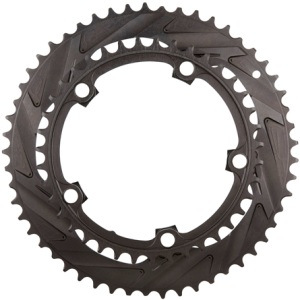
Chainrings and Cassettes
If there’s one thing that Shimano is good at, it’s forging metal. If there’s one more thing they’re good at, it’s patents. The Japanese masterminds at Shimano are working furiously behind-the-scenes, filing patents like crazy. They own things like the two-piece quick release skewer, which make fast wheel changes a snap, and the floating rear derailleur pulley, which is a large reason why Shimano drivetrains are so whisper quiet.
It’s no secret that Shimano’s front derailleur and chainring shift quality has been the gold standard for many years. This is due in part to the fact that they cold-forge their chainrings (whereas nearly all competitors use machined rings), but also due to their many patents on shift ramp and pin design. It’s not that competitors aren’t trying or don’t make good product – they do. They just can’t infringe on the patents.
A very interesting chainring work-around is made by a company called WickWerks. Their chainrings don’t feature any shift pins at all, but rather a very aggressive set of ramps that they call BRIDGE Technology. These ramps occur in very tight spaced intervals around the entire chainring, as opposed to most rings which only feature a few ramps at very specific locations. Rather than trying to design a specific shift point where we statistically ‘think’ someone will shift (i.e. 3 o’clock position), the WickWerks design theoretically gives you a perfect shift at any point in the pedal stroke. The ramps are also much longer than traditional ramps – spreading the load out and “lifting” the chain up and over the teeth. Reports on performance are quite good, and WickWerks sponsors several top professional athletes including 8-time US National Cyclocross Champion, Katie Compton.
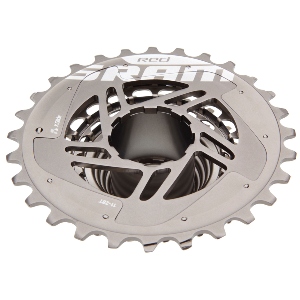
As well, many of you are familiar with one of SRAM’s shifting technologies called Open Glide. This is specific to their 10-speed road equipment, which feature cassettes with a “missing tooth” on each cog, and reportedly faster shifting as a result. The older 9-speed product, in comparison, used Power Glide (PG) technology and no missing tooth. Upon introduction, this technology was featured on all SRAM 10-speed road cassettes; OG-1070 (Force/Rival) and OG-1090 (Red). A curious thing happened, however, a few years after hitting the market… the tooth grew back. The previously OG-1070 cassettes became PG-1070 cassettes, allegedly at the same time a specific Shimano cassette patent expired. And, the anecdotal evidence says that they got quieter, too. OG-technology lived on in the Red 1090 cassettes, likely to save weight on this racers-favorite group set. However, the new 2012 Red cassette is called XG-1090, which has all its teeth, and lost only unnecessary material between them (making this cassette the lightest on the market by far).

The list could go on, but it should be clear by now that there is a lot of funny business going on in our decidedly fun industry. Expect this back-and-forth jabbing to continue occurring for years to come. For manufacturers, life will continue to be difficult to carve a niche, grow, and thrive in. For consumers, it means a great selection of products made by companies hungry for your business. My advice is simply to keep both eyes open and be willing to make a judgment of your own as to whether a technology is legitimate, imagined, or as George Costanza would put it: “Bubkes!”





